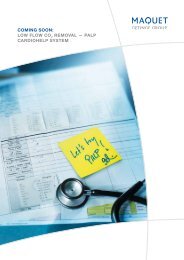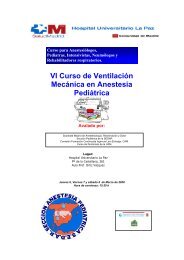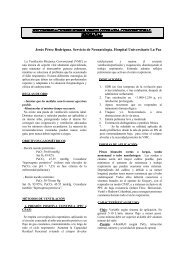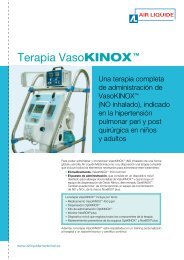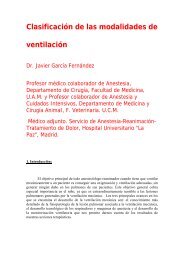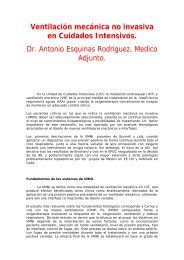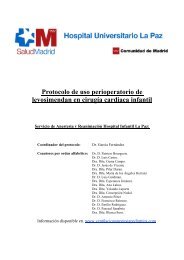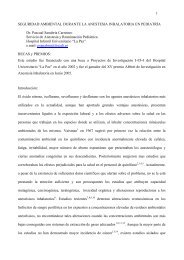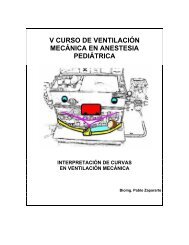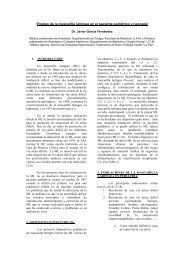european guidelines for training in paediatric anaesthesia
european guidelines for training in paediatric anaesthesia
european guidelines for training in paediatric anaesthesia
You also want an ePaper? Increase the reach of your titles
YUMPU automatically turns print PDFs into web optimized ePapers that Google loves.
should be established with a specialised <strong>paediatric</strong> surgical centre to enable these anaesthesiologists tomake visits <strong>for</strong> updat<strong>in</strong>g their knowledge and expertise.Specialists <strong>in</strong> General AnaesthesiaAll specialist anaesthesiologists <strong>in</strong> general <strong>anaesthesia</strong> should be capable of safely anaesthetis<strong>in</strong>g childrenover 3 years of age <strong>for</strong> the common surgical procedures of childhood. They are also required to keep upto date <strong>in</strong> <strong>paediatric</strong> resuscitation and the stabilisation of <strong>in</strong>fants and children prior to transfer to<strong>paediatric</strong> surgical centres.References1. De Lange S. The European Union of Medical Specialists and speciality <strong>tra<strong>in</strong><strong>in</strong>g</strong>. Eur J Anaesthesiol2001; 18: 561-562.2. European Board of Anaesthesiology. Tra<strong>in</strong><strong>in</strong>g Guidel<strong>in</strong>es <strong>in</strong> Anaesthesia of the European Board ofAnaesthesiology Reanimation and Intensive Care. Eur J Anaesthesiol 2001; 18: 563-571.3. Association of Paediatric Anaesthetists of Great Brita<strong>in</strong> and Ireland. Tra<strong>in</strong><strong>in</strong>g <strong>in</strong> Paediatric Anaesthesia2002.



